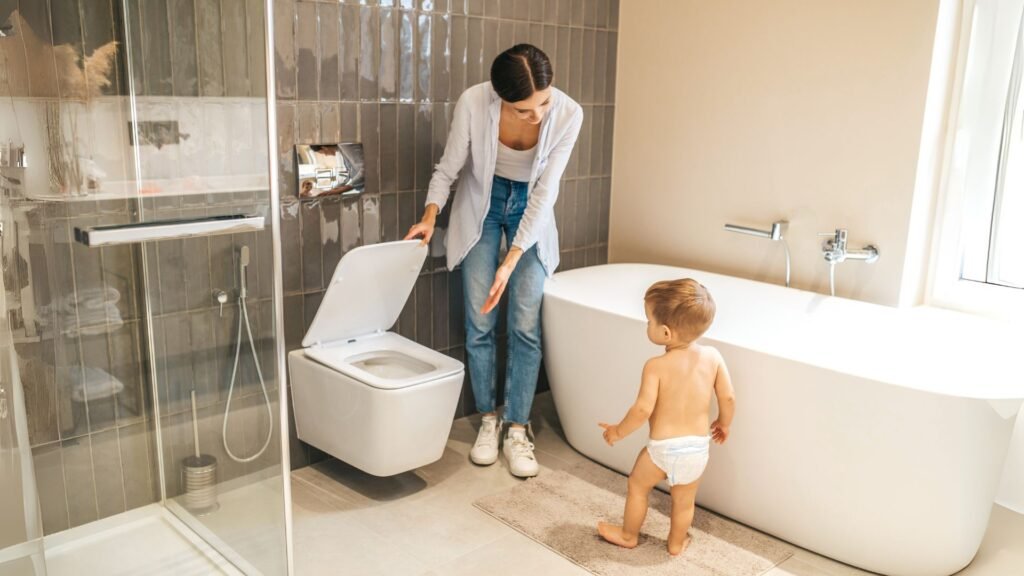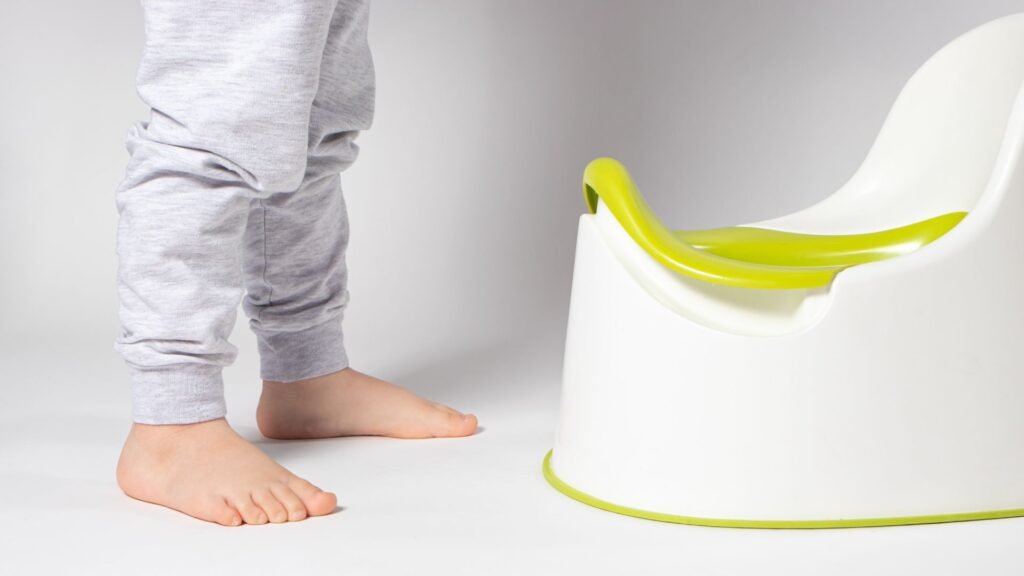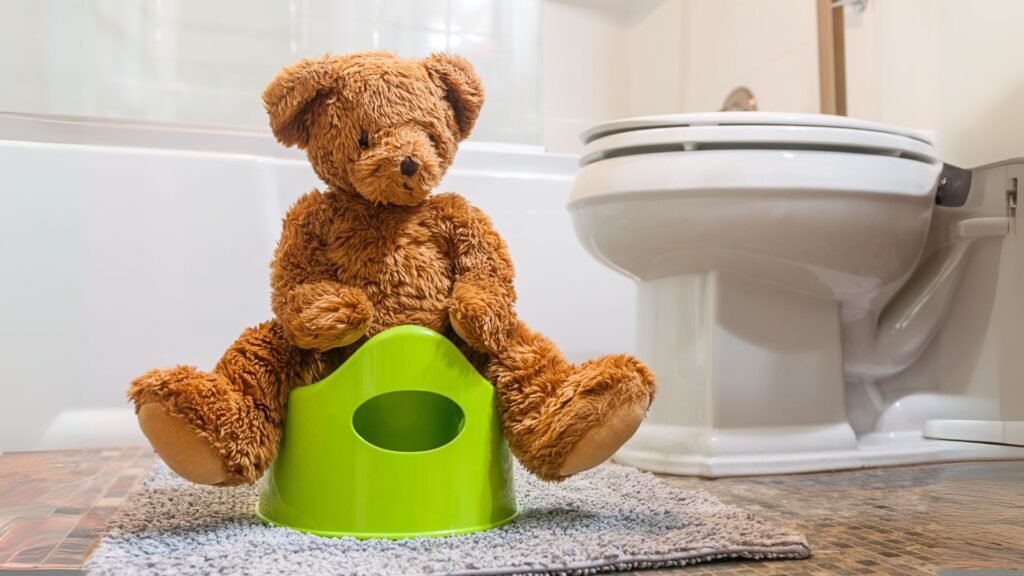Potty Training
Potty training is one of the most important transitions during early childhood. It is a process where children learn to recognize and regulate their physiological needs, moving away from diapers and developing their independence.
As you might imagine, this stage brings many questions and some anxiety, both for parents and educators. That’s why today we want to provide you with a guide to help you feel more supported during this process, which should not become a source of stress for you or your little one.
Shall we start?
When is the best time to start potty training? Preguntar a ChatGPT
It’s important to know that there is no specific age to start potty training. It usually happens between 18 months and 3 years, but it all depends on your child’s own pace.
When children show signs of being ready both physically and emotionally, that’s when the conditions are right to begin. Don’t compare your child’s process to others; every child is different, and to have a successful transition, you need to follow their timing.
On an emotional level, it’s not recommended to start during major changes (moving house, a new sibling, first day of school, trips, transitioning from crib to bed, etc.), as these can cause anxiety and insecurity. It’s better to wait until the family routine is stable to support this process calmly.

How do I know if my child is ready to stop using diapers?
There are some signs that children are ready to start the potty training process. Here’s a list of questions to help you evaluate if it’s a good time to begin. If you answer “yes” to most of them, it’s likely your child is preparing to start potty training. Be honest with yourself and assess if they are truly ready:
Does their diaper stay dry for more than 2 hours?
Do they use words to express what’s happening?
Do they let you know when they are going or about to go potty?
Do they show interest in the toilet?
Can they dress and undress themselves?
Do they seek privacy when they need to go?
Do they ask to be changed when their diaper is dirty? Do you notice they feel uncomfortable?
Do they show interest in stopping using diapers?
Do they understand what the bathroom is for?
Remember, there’s no “right” or “wrong” age for potty training, but it’s very important to start when the child is truly ready. If they meet most of these signs, it means their body and brain are starting to communicate to detect when the bladder is full — so you can consider beginning the process.

What happens if I start too early?
If the child is not ready, starting too early can be counterproductive. The process may take longer than necessary, and you might need to pause and try again later. It can also cause conflicts, frustration, setbacks, or negative associations with the bathroom.
However, if you’ve already started and realize your child isn’t ready, don’t worry. Use training pants (pull-ups) that feel like regular underwear, wait a couple of months, and then try again.
In the meantime, read stories about potty training, talk to them about how to use the potty or toilet seat, listen to songs about the topic, ask if they’ve had an accident in their diaper, and so on. Don’t stress—it’ll be easier to start again in a few months.
What do I need to get started?
If you’ve noticed that your child is ready, have checked your home environment, and ensured there is a stable, predictable routine, let everyone who cares for your child (family, nanny, daycare) know about the process so they can support it consistently. Make sure you all agree to avoid confusing the child.
You will need:
A potty or toilet adapter: let your child choose what they prefer; the important thing is that they feel comfortable and motivated.
Easy-to-remove clothing: pants with elastic waistbands or dresses.
Pull-up diapers: it’s recommended to start with diapers that feel like underwear, so they have the freedom to take them off easily when going to the bathroom. Once you see they stay dry longer, switch to soft fabric underwear.
Spare clothes for accidents: always be prepared just in case.
Wet wipes or toilet paper.
Accidents happen!
When children are learning to use the potty, it’s completely normal for them to have accidents during the process. It’s very important not to scold them when this happens, as it can cause children to hold in their needs out of fear, leading to a rejection of potty training and possibly urinary infections.
If your child has an accident, stay calm and take them to the potty. Once there, remind them that this is the place to go when you need to pee/poop. Sit them on the potty and ask if they want to finish peeing or pooping. It doesn’t matter if they don’t do anything, but this helps keep associating the potty with going to the bathroom.
Accidents happen, especially at the beginning. So be patient and always carry a change of clothes. It’s just a matter of time before your little one gets it!
Nighttime Potty Training
Nighttime potty training is usually the final stage of the process and can take longer. It’s common for children to occasionally wet the bed until around age 5; only after that age do professionals typically consider whether further evaluation is needed.
To start nighttime potty training, we recommend:
Limiting liquids at least one hour before bedtime.
Taking your child to the bathroom right before going to sleep and as soon as they wake up in the morning.
Using pull-up diapers and waterproof mattress protectors.
If your child can stay dry throughout the night for a full week, they may be ready to switch to regular underwear.

What if I let them use the tablet/phone?
Although it may seem like a practical way to keep the child entertained, it is not recommended to use electronic devices. This can distract them and make it harder to pay attention to their bodily sensations, which is essential for learning to recognize when they need to go to the bathroom.
Also, associating potty time with screens can cause the child to depend on that external stimulus to sit on the potty or toilet, potentially prolonging the process.
It’s better to accompany them with short conversations, songs, or stories related to using the bathroom. This helps promote focus on the activity and strengthens their connection with their body and emotions.

